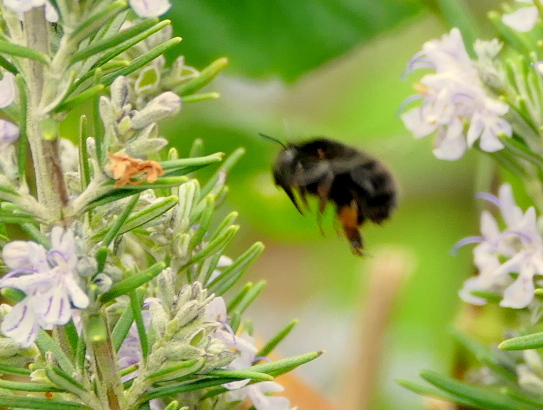Yellow rattle is firmly established from seed that was spread last Autumn. It will reduce the vigour of the grass and hopefully allow the vetch to grow.
The Oxeye daisies and Cat's-ears have thrived nearby where they have been allowed to run riot for many years, providing food for many different insects including bumblebees, solitary bees, flies and beetles.
Above looks like an Early bumblebee, Bombus pratorum.
On the same daisies were tiny Varied Carpet beetles, Anthrenus verbasci.
I've no idea what this is above. Can anyone help?
A solitary bee.
On my blackcurrants was a Hover-fly, Eupeodes nitens, which is characteristic of ancient woodland. There are mature oak trees nearby and one in my garden.
A Hairy shieldbug was in the formal garden on an Agapanthus leaf.
My thanks to this Tree bumblebee pollinating my blackberry flowers.
Many plants like this Cornflower are covered with Aphids... and so what! They are still alive and the aphids will be predated by Ladybirds, Lacewings etc.. An organic wildflower garden gives an endless source of interest for nature lovers.

No comments:
Post a Comment